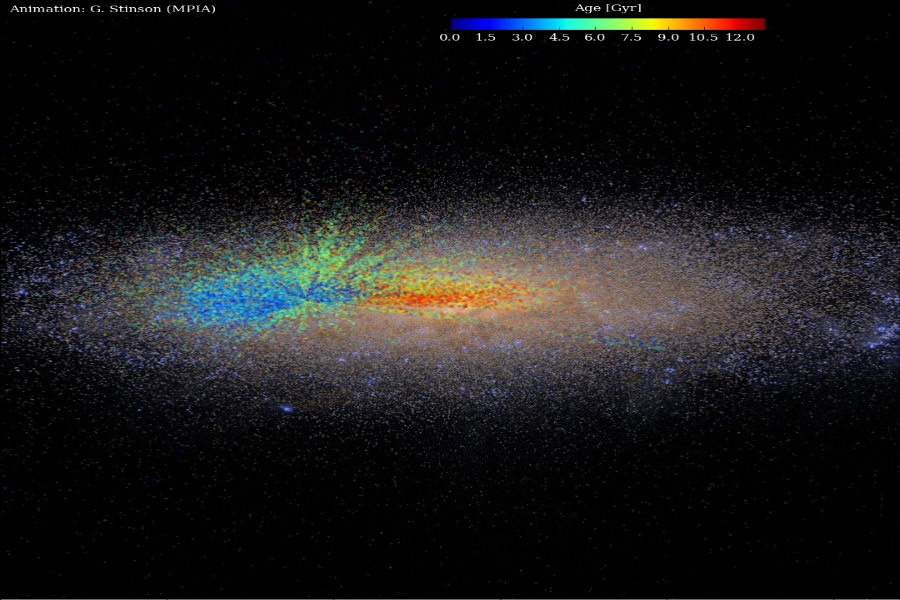Huge new map showing the evolution of the Milky Way
Loading...
Scientists from the Max Planck Institute for Astronomy in Heidelberg, Germany have created the largest map showing the ages of stars in our galaxy.
A representative cross-section of the Milky Way map confirms what astronomers have long predicted: that for billions of years our galaxy has been expanding outward, with the oldest stars concentrated towards the center of the swirling disk of gas and dust, and younger ones spread out towards its outskirts, about 50,000 light-years away.
“In the galaxy we know best – our own – we can clearly read the story of how galaxies form in a universe with large amounts of cold dark matter,” said Melissa Ness, a postdoctoral researcher at Max Planck, in an announcement. “Because we can see so many individual stars in the Milky Way, we can chart its growth in unprecedented detail,” she added.
Ness and her team studied the light emitted from about 70,000 red giant stars to produce the large map showing the evolution of the Milky Way. Red giant stars are luminous dying stars, huge in size but low in mass.
"These are an extremely valuable star to get ages for, because they are very bright and we see them at very large distances," Dr. Ness told the BBC.
To create the map, the astronomers used information collected by the Sloan Digital Sky Survey, a project to create three-dimensional maps of the universe, to study the light wavelengths emitted by thousands of red giants, 300 at a time. These spectra helped the astronomers determine the chemical composition of the stars, information that hinted at their age, but alone could not determine it.
To figure out ages, reported the BBC, the team had to combine the wavelength learnings with observations of the same stars made by NASA’s Kepler satellite, which has discovered more than 1,000 stars since it was launched into space in 2009.
Kepler helped verify the masses of the red giants.
"If we know the mass of these Kepler stars, we can determine their ages," Ness told the BBC.
Finding the mass of the red giants has historically been difficult to do, but more and thorough surveys of the Milky Way have made new techniques such as Ness’ possible.
Sky and Telescope has a 3D version of the map on YouTube.
Astronomers hope this model could be used to calculate ages for all stars.







